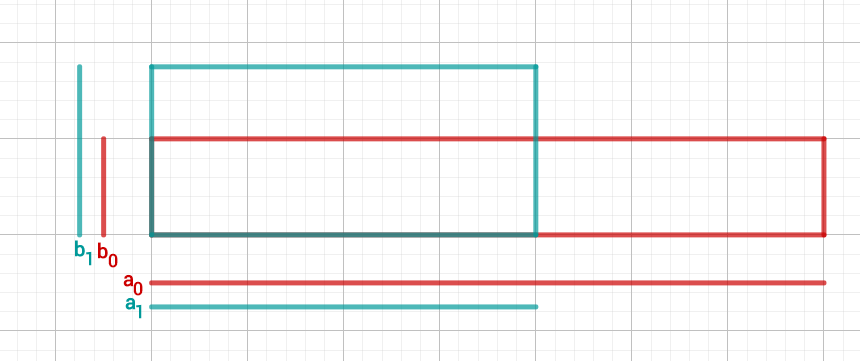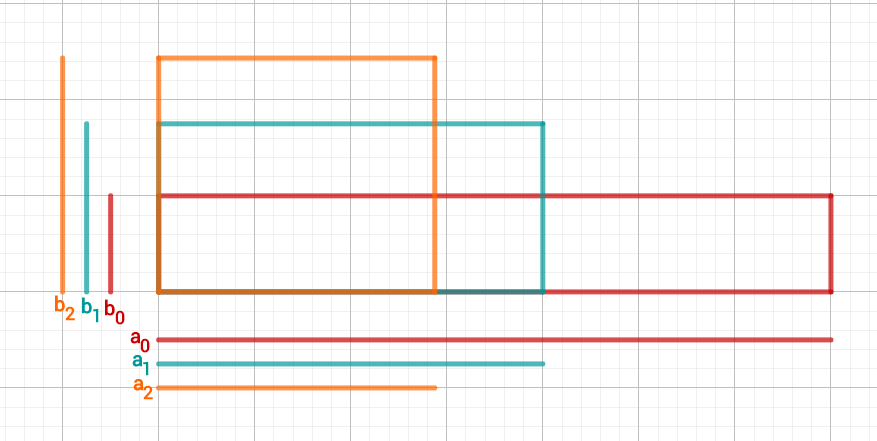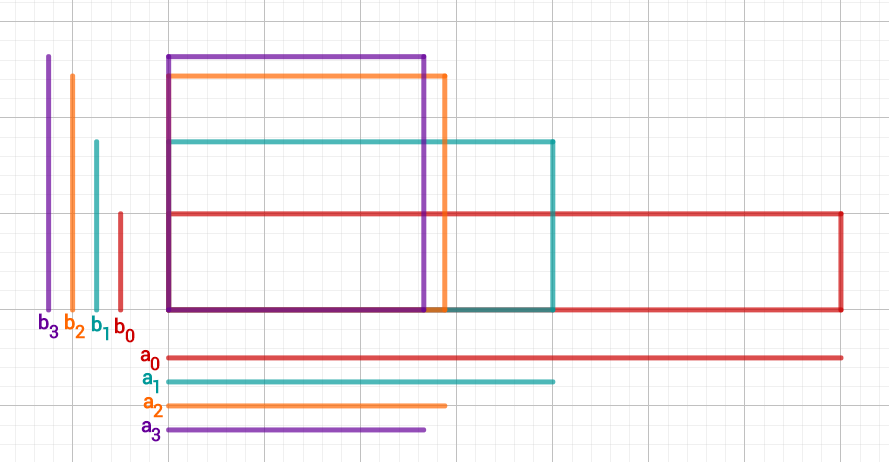Exercises: Square Roots
Estimate the value of .
Calculate the first four steps using Heron's method and then estimate the value of .
Heron's Method
Heron's method is an algorithm that allows you to estimate the value of square roots.
You try to find a square whose area is the number under the root (which is , here). The side length is then the square (which is , here).
To find the square, you start with a rectangle of area and change its shape to be more "square-like" step by step.
Step 1
Find the first rectangle by picking two side lengths and , such that the area of the rectangle is
In our case, so it follows to choose
In the figure below you can see the initial rectangle.

The next steps always follow the same pattern:
First you calculate the mean value of the old side lengths, which will be one of your new side lengths, called .
Then you calculate the other side length by dividing with being the fixed area.
You can find a detailed explanation of these steps in this applet.
Step 2
Calculate the mean value of and .
Then calculate .
Your new side lengths are
In the figure below you can see the original rectangle (red) and the new one (blue), which has now become a bit more square-like.

Step 3
Calculate the mean value of and .
Then calculate .
Your new side lengths are
In the figure below you can see the new rectangle in orange.

Step 4
Calculate the mean value of and .
Then calculate .
Your new side lengths are and .
You may notice these two values are not that different anymore.
In the figurebelow you can see the change in the rectangles. The last one (purple) is already almost a square.

Final Estimate
You could do as many further steps as you wish in order to get a more precise result. Now, the problem setting tells us to do exactly four steps, so we will stop here.
Since and , the value of must be between these two numbers. So a good estimate for is given by the mean value of the two numbers:
For comparison: The precise value of is